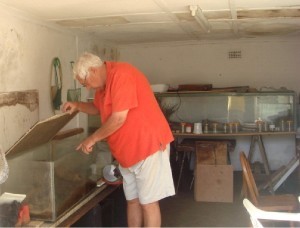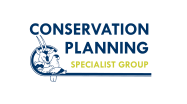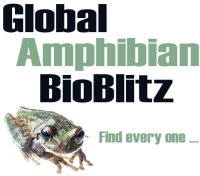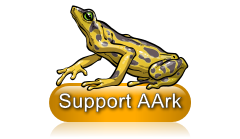Robert Hopkins, Natural History Museum in Bulawayo, Zimbabwe
I became interested in amphibians at the age of six and my Aunt, Marge Courtney-Latimer, was the Director of the East London Museum in South Africa, and for whom the coelacanth Latimeria chalumnae was named.
 |
| Robert Hopkins works on endemic frogs at the Natural History Museum in Bulawayo, Zimbabwe. |
I was educated at Selborne College in East London, and then went to Rhodes University from 1959 to 1961, studying biology. However I was unable to complete my degree as my family came under extreme financial circumstances. I left for Rhodesia, where I was employed in their civil service. I continued my research on amphibians, and grew tadpoles, which I released after metamorphosis.
I was employed by the Natural History Museum in Bulawayo, and work with Dr Donald Broadley, with my work being confined to research on the frogs of Zimbabwe. It is a fact that the endemics, which are found mainly on the eastern border with Mozambique are under stress. In fact I have been trying to locate them for four years without success. I have conducted these searches with Professor Alan Channing, Professor Louis Du Preez, Dr Broadley, Dr Cummings and Dr Conradie.
My methods include the sampling of ova, which are then hatched in my tanks in my setup at my home. As can be seen my set up is not as I would like, and I really would like to improve the whole layout, to ensure a more efficient way of breeding my specimens.
I wrote a paper describing the Leptopelis bocagii tadpole, this had never been described before, and was as a result of my breeding specimens ex situ. These specimens were taken from a drying dambo, and were in danger of dying.
I also collected ova, hatched them, and found them to be Kassina senegalensis – the description of their metamorphosis is the subject of a paper which is in the process of being published.
It is a fact that a number of my projects have found that previously described and indeed named specimens, may be incorrect. I say this due to the fact that by breeding ex situ, you are able to monitor, and then identify the specimen positively, if need be by mitochondrial examination.
My work continues, and is constantly springing surprises.
Check out our other Amphibian Advocates!













